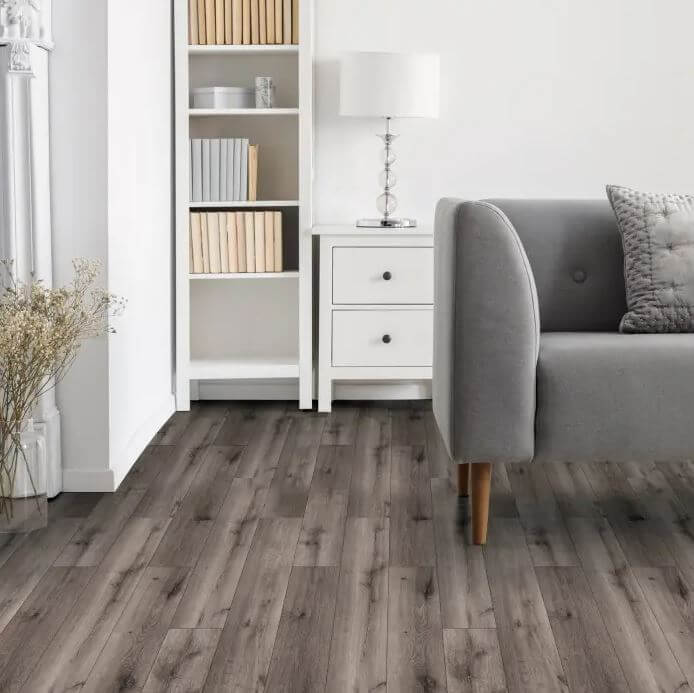
Bathrooms and kitchens have always been prime areas where vinyl flooring products have been used. Vinyl floors cannot fully withstand the rigors of these spaces, but their high water resistance and ease of cleaning and maintenance make them an inexpensive, low-maintenance flooring choice. Improved design and manufacturing of modern vinyl flooring products have made them a viable option for spaces once occupied by ceramic and porcelain tiles and hardwoods. We detail his three types of vinyl flooring: Composite Vinyl Tile (VCT), Sheet Vinyl, and Luxury Vinyl Flooring (LVF).
Composition of vinyl flooring:
Vinyl flooring has become truly practical flooring with the advent of PVC (Polyvinyl Chloride), a synthetic plastic containing carbon, hydrogen, and chlorine. Traditional vinyl sheet or vinyl tile flooring is a composite product with a PVC layer bonded to a fiber core, covered with a printed design layer and a tough, clear wear layer. The difference between high-quality vinyl floors and low-quality vinyl floors is the thickness of the product, the durability of the top layer, and the type of backing.
DURABLE AND WATER RESISTANT:
vinyl flooring is a little soft underfoot but surprisingly strong. Vinyl floors are so popular in bathrooms and kitchens because they are resistant to moisture, steam, and humidity. Water hardly penetrates the surface of this material and will not damage the subfloor, although it can be slightly brittle at the seams.
EASY TO MAINTAIN:
vinyl floors are extremely easy to maintain. However, if the legs of heavy furniture are not equipped with protective pads, they can be pierced. Be aware that rubber-backed carpets can react chemically and stain vinyl. Also, vinyl floors are yellow easily with constant exposure to direct sunlight (although quality products have UV protection).
Choosing a vinyl flooring:
Vinyl flooring offers many advantages over other floorings for some applications. It is generally much cheaper than hardwood, performs much better in situations where moisture is an issue (bathrooms, kitchens, entryways, basements), and is considered pet friendly. Vinyl was once thought to be flimsy, but with the advent of premium vinyl floors, this is no longer the case as it is often almost indistinguishable from hardwood floors and ceramic/porcelain tiles.
Among vinyl floorings, Luxury Vinyl Flooring (LVF) has many advantages and is often the best choice, although it comes at a higher cost due to its superior appearance and performance. However, in cases where a seamless, waterproof surface is essential (such as children’s bathrooms), we recommend using vinyl sheets. Also, vinyl composite tiles remain popular among budget homeowners who prefer DIY.
Each type of vinyl flooring has a different style and quality category, not to mention different flooring installation requirements. Some features to consider:
Product thickness and wear layer:
Regardless of the type of vinyl flooring you are considering. Compare the overall thickness of each product. In general, thicker vinyl sheets, tiles, or planks are best to provide a more comfortable walk and may be more durable. Most vinyl flooring products have multiple layers for strength and the surface wear layer should always be the thickest. Make sure the wear layer is at least 5 mm thick.
Surface textures and backings:
If slip resistance is an issue, look for textured flooring that provides grip underfoot. Premium vinyl or vinyl composite tiles are generally better in this regard. Vinyl wrap becomes slippery when wet. Different types of vinyl flooring may have different backings that require other installation methods. Some linings are sticky and some are not. Pads can be padded or complex, and the type and quality of the pad affect the performance and price of the product. Padded (synthetic or cork) reinforcements are quiet, warm to the feet, and well-insulated.


